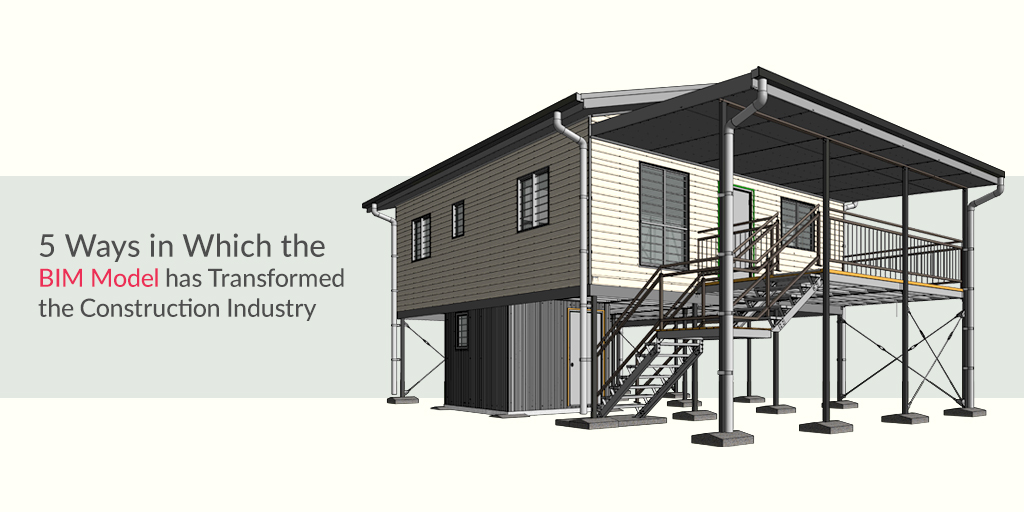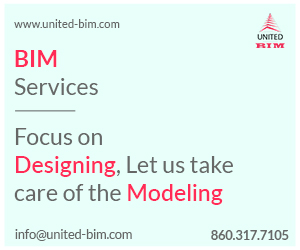BIM was conceptualized between the 1960s to 70s. But it came into practice much later. Gradually, every single function that is involved in the building construction was being done with BIM.
From Planning to designing to setting the workflows to analyzing the material quantity to estimating the cost, BIM took over these functions and amalgamated on everything under one platform.
Before BIM came into the picture, the AEC industry was troubled with a lot of things. Delays, excess project delivery time, frequent clashes, overrun costs, collaboration issues, and various other issues.
Building Information Modeling has changed everything. It has made the process easier, smoother, and collaborative. There are fewer clashes plus it is a lot easier to resolve them. The BIM model is another proficient part of BIM which we will be discussing here today. Before that, let us know about BIM briefly.
With the help of BIM, the project owners and stakeholders benefit the most. But the key is to create an amazing BIM Model with an expert’s advice and knowledge. Want to talk to an expert, Contact United BIM.
What is BIM and What Does It Have to Offer?
In simple words, Building Information Modeling is an advanced technology that ensures the collaboration of different processes in the AEC industry. These processes can be anything from physical to functional aspects encompassed in the sphere of construction.
Further BIM makes it possible to virtually construct the whole building intact with every single component on a computer. The beauty of using BIM is that it will reduce the number of errors and clashes substantially.
When all the components are constructed on a computer, the engineers can detect the clashes and also resolve them. In the final design, everything will be sorted out to create a flawless construction outlay.
BIM offers efficiency and authenticity at a minimal cost. It offers a great tool in the hands of AEC professionals to plan, design, operate, manage, and finally complete the work with minimum errors.
The BIM Model is a collective term used to describe all the elements that are depicted in a computer-based program. A model is a generic term used to portray all the aspects of the building construction. From planning to comparing the planned and As-built drawings, a BIM model contains everything.

Don’t have the time to read the whole blog, no worries you can download it and read it at your convenient time.
Elements of BIM:
Within the BIM Model, we also need to discuss the elements of BIM. These elements are essential from the perspective of a successful implementation of the project. For a BIM Model to work successfully, all these elements need to collaborate.
The Five Elements are:
- Information
- People
- Policies
- Processes
- Technologies
Let’s discuss these elements in a bit more detail:
1. Information:
Information relates to the aspects that provide details about the project in different modes. There are two types of information that we can follow. Models and Documents.
Models are the digital data representation of any component or object. It can also include roads, bridges, and any other aspect of the building. Further, the Documents are the important papers, drawings, and any other type of media that is essential for the project. The documents are also converted into digital format.
2. People:
The human element is crutial for ensuring the success of a project. The project managers and other classes of supervisors play an important role in the BIM Model and its implementation.
3. Policies:
The BIM-related policies and procedures are also essential for the success of a project. The motive of these policies is to ensure the execution of the best policies and procedures to be implemented in the construction process. Further, the benefit of these practices is to reduce risks and disputes.
4. Processes:
The processes include the work order and activities that must be aligned from the beginning to the end.
5. Technologies:
The software and hardware used for the construction process comes under this element. This can be the software used to develop the BIM Model.
Benefits of BIM Model for the Construction Industry:
The terms BIM Model and BIM are synonymous with each other. Using the BIM made models, the AEC professionals will benefit from the extensive benefits accorded to them from BIM only.
Hence, it is essential to understand the very nature of BIM and how it has transformed the way the construction industry operates in the present time.
1. Less rework:
The virtually prepared BIM Model of the entire building means that the stakeholders and everybody connected to the project will know the project scope.
Apart from this, with these models, the clashes are resolved before the construction process begins. That will save a lot of time and money which would have been required on correcting those clashes during the construction.
2. Improved project outcome:
After they started using BIM, the project owners and managers observed that the project outcome has improved and not only in the cost-efficiency and time-saving aspect.
But, various other aspects are associated with a better project outcome due to BIM. Here factors like personal satisfaction, better understanding, and easy explanation take the lead.
These are the factors that also contribute to a smooth flow of information throughout the project.
3. Value for the architects:
Before BIM, the architects had to reconstruct the designs and drawings recurrently. And there were several reasons for this kind of rework.
The trouble they had to go through to ensure the client’s satisfaction was even worse. But, with the coming of BIM and computer-aided construction models, everything has changed.
The architects can now easily make changes to a project model without having to spend hours while working on the pen and paper approach.
4. Benefits are accorded to all the participants:
Not only the architects, but BIM has made the job of fabricators, contractors, MEP Engineers, Owners, and Structural Engineers easier than before.
All those who are working in the abovesaid fields can understand the BIM Model even with a little knowledge about it. The Fabricators will understand the type of material to be used along with knowing the dimensions and other kinds of measurements.
Related Blog: Do you want to know more about Fabrication with BIM?
The MEP engineers can collaborate with the structural designer of the building for better coordination. The manufacturers will come to know about the material requirements and the delivery schedule beforehand.
All in all, every department that is working on the project will benefit from the BIM Model.
5. Information boom:
A great amount of detail and information is available today with the project engineers and technicians and the reason behind this is the BIM Model.
Within the purview of BIM, any type of construction drawing can be made, reviewed and shared with others.
This wide expanse of information that is available with everyone involved in the project leads to better collaboration.
What Does the Future Hold for BIM?
Going into the future, BIM is going to be used by almost every architectural and construction organization. Those who are not using it already have to employ BIM to make the blueprint ready for the construction project.
The majority of the developed countries like the USA, the UK, Japan, Germany, and others have already employed BIM into their construction industry.
On the other hand, developing countries like India and China are also making attempts to understand and learn BIM. With its implementation in the global AEC industry, BIM is going to become one of the largest common platforms to be used in any sphere of activities.
Related Blog: BIM for Facility Management. Know how does BIM do it.
Conclusion:
BIM Model is a sophisticated element of the AEC industry. It has the power to carry forward the construction industry. BIM is useful in almost every function of a construction building.
It can be something as small as putting in orders for the raw material to constructing components and different parts in an impossible situation. And to make it possible, BIM can be utilized to reimagine collaboration among everything and everyone.
References:
- https://www.pmi.org/learning/library/building-information-modeling-changing-construction-industry-6983
- https://www.viatechnik.com/building-information-modeling-bim-revolutionized-construction-industry/
- https://www.bimservicesindia.com/blog/how-has-bim-changed-the-facade-modeling-in-construction-projects/
- https://connect.bim360.autodesk.com/benefits-of-bim-in-construction
- https://www.autodesk.com/solutions/bim
- https://www.geospatialworld.net/blogs/what-is-bim/





